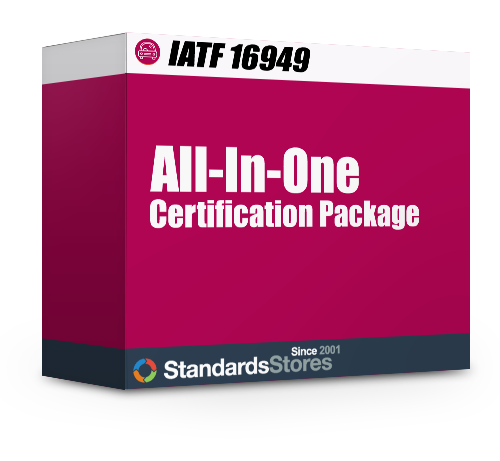What is IATF 16949?
IATF 16949 is a global Quality Management System Standard for the Automotive industry. IATF 16949:2016 incorporates the structure and requirements of the ISO 9001:2015 quality management system standard with additional automotive customer-specific requirements. It was developed by the International Automotive Task Force (IATF), with support from AIAG. This standard requires certification by a 3rd party auditor (Registrar/CB/Certification Body). Here are some key areas of focus:
- Continuous improvement
- Defect prevention
- Reducing waste
- Product safety
- Risk management
- Contingency planning
- Requirements for embedded software
- Change and warranty management
- Management of sub-tier suppliers
You may want to read:
- What is a Quality Management System?
- Learn about the IATF Requirements.
- Learn the Steps to IATF 16949 Certification.
- IATF 16949:2016 Training reviews all the clauses of IATF 16949:2016.
“IATF 16949 Certified” means an organization has met the requirements in IATF 16949. Learn about how to advertise your IATF 16949 Certification.
Why IATF 16949 and not just ISO 16949?
IATF 16949 was developed by the International Automotive Task Force (IATF). IATF 16949:2016 is an innovative document designed by IATF. It provides strong preference to the customer, with inclusion of a number of consolidated previous customer specific requirements. The IATF maintains strong cooperation with ISO by continuing liaison committee status ensuring continued alignment with ISO 9001.
Why do companies want to Implement IATF 16949?
Registration to IATF 16949 is not only beneficial but a requirement for any company wanting to supply its products to the Automotive Industry. Companies registered to this Technical Specification are required to develop their suppliers’ Quality Management Systems with the goal of the supplier conforming to IATF 16949.
Learn More: Benefits of IATF 16949
IATF 16949 Revisions
IATF 16949:2016
IATF 16949:2016 is the current version of the IATF 16949 Standard which outlines the requirements an organization must maintain in their quality system for IATF 16949 certification. It includes the ISO 9001:2015 requirements and supplements them with additional IATF requirements. ISO published ISO 9001:2015/AMD1:2024 in February of 2024, which amends Section 4 to include climate action considerations. IATF 16949:2016 is the most recent version of the standard which included several changes from TS 16949 including:
- Adaption/adoption of the new ISO structure (Annex L) to align with other standards including ISO 14001, ISO 45001, etc.
- Promotes a process approach in order to produce the sought-after quality outcomes.
- Presents requirements for quality performance in the organization’s strategic planning.
- Greater emphasis on top level management for ownership of the QMS.
- The main focus is on customer satisfaction.
For more detailed information, please see below:
TS 16949: 2009
TS 16949 was an internationally recognized Quality Management System specification for the automotive industry. In conjunction with ISO 9001:2008, TS 16949 defined the quality management system requirements for the design and development, production, and when relevant, installation and service of automotive-related products. It was applicable to sites where customer-specified parts for production and service are manufactured. This revision is based on the updates made to the ISO 9001:2008 standard.
TS 16949:2002
TS 16949:2002 TS 16949:2002 was based on ISO 9001:2000. Together, they defined the quality management system requirements for the design and development, production and, when relevant, installation and service of automotive-related products.
TS 16949:1999
TS 16949:1999 was the first edition of the quality management system for the automobile industry. It is a standard aimed at the development of a quality management system that provides continual improvement, emphasizing defect prevention and the reduction of variation and waste in the automotive industry supply chain.
QS9000
QS9000 was a quality standard developed by a joint effort of the “Big Three” American automakers, General Motors, Chrysler and Ford. It was introduced to the industry in 1994 and superseded by TS 16949 in 1999.



